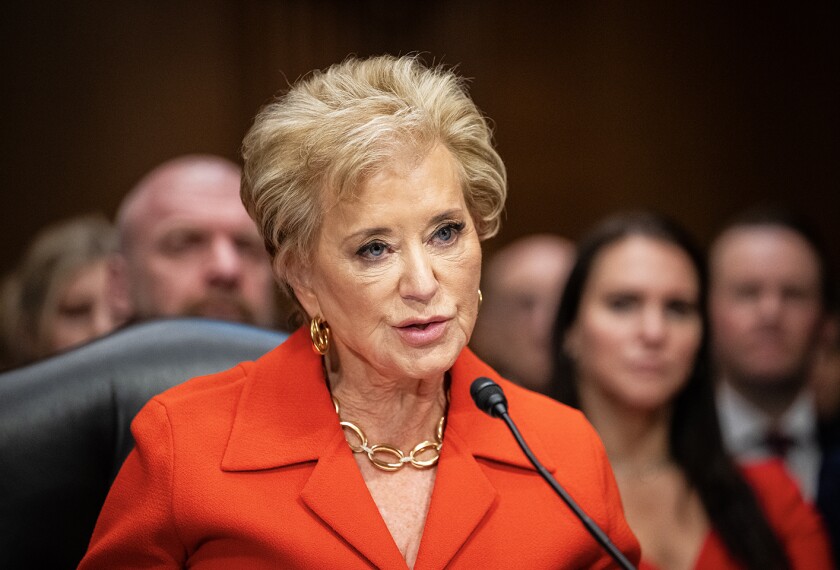Includes updates and/or revisions.
A new study of hundreds of charter schools in eight states contains both good news and bad news for supporters of the nation’s roughly 4,600 public charter schools.
Contrary to critics’ fears, charter schools are not more racially segregated on average than nearby public schools in their communities, according to the study being released today by the RAND Corp., a research group based in Santa Monica, Calif. The study also says that the publicly funded but independently run schools don’t appear to be skimming the best students from local public systems. And in Florida and Chicago, at least, the research finds that charter school students seem to be more likely than public school students to graduate from high school and enroll in college.
But the researchers still found it difficult to determine whether charter school students on the whole were learning more, as measured by their test scores, than they would have in their regular public schools. That’s because most of the elementary schools lacked any base-line data for the kindergarten students they enrolled. When researchers looked at charter secondary schools, they found few differences in learning gains between students in charters and regular public schools.
“In some sense, it suggests we know less than we thought we did about charter schools,” said Brian Gill, a primary author of the RAND study who is now a senior social scientist at Mathematica Policy Research Inc. in Princeton, N.J.
The reason for that, he added, is that “it’s much harder to assess elementary school impacts, and the results on educational attainment suggest that, by focusing exclusively on test scores, we may have been underestimating” the benefit of going to a charter school.
College-Going Rates
Charter schools are public schools that are given more autonomy than most public schools to make decisions about curriculum, instruction, budgeting, and, in some cases, staffing. Studies to date of this relatively new breed of schools—the first of which opened in Minnesota in 1992— have yielded mixed results on their effectiveness.
For the new study, researchers based their findings on years of student-achievement data from five districts—Chicago, Denver, Milwaukee, Philadelphia, and San Diego—and the states of Florida, Ohio, and Texas. They only had data on high school graduation and college enrollment for Chicago and Florida, and in those jurisdictions, the results for charters were particularly promising.
Students attending a charter high school in Chicago and Florida were found to be 8 to 10 percentage points more likely to enroll in college than were their counterparts in regular public schools.
In Chicago, the study also found, the odds of graduating and going on to college were especially good among students who had been in charter schools from middle through high school, thus eliminating the sometimes-rocky transition that students make from middle to high school.
Robin Lake, a nationally known charter school researcher who was not connected with the RAND study, pointed to the findings on graduation rates and college attainment in Florida and Chicago as particularly noteworthy.
“This is really the first time we’ve gotten a good look at charters on this measure,” said Ms. Lake, who is the executive director of the National Charter School Research Project, based at the University of Washington at Bothell. “The results are exciting, and I hope they compel more states to track the information.”
She added that many charter high schools “are entirely oriented” around getting students into college, “and in the long run, it’s probably a better measure of student outcomes than test scores.”
Age of School Matters
As for students’ learning gains, they tended to vary, depending on where schools were located and how new the schools were. The researchers found, for instance, that learning gains in first-year charter schools tended to fall short of the gains in surrounding public schools for most of the jurisdictions studied.
Also, while average student performance in Ohio charters was comparable to that in the state’s regular public schools, the charter school average dipped when charter elementary schools were added to the mix. The researchers said the substantial number of virtual schools among Ohio’s elementary charters may explain the low test scores, because students in that state’s virtual schools tend to score lower on average than their counterparts in traditional public schools.
The researchers also removed elementary schools from the overall study sample in order to get a clearer picture of how charter schools were influencing student achievement, without the handicap of missing kindergarten base-line data.
“In five out of seven locales,” the report says, “these nonprimary charter schools are producing achievement gains that are, on average, neither substantially better nor substantially worse than those of traditional public schools.”
The study was financed by the Seattle-based Bill & Melinda Gates Foundation, the Joyce Foundation in Chicago, and the William Penn Foundation in Philadelphia.





